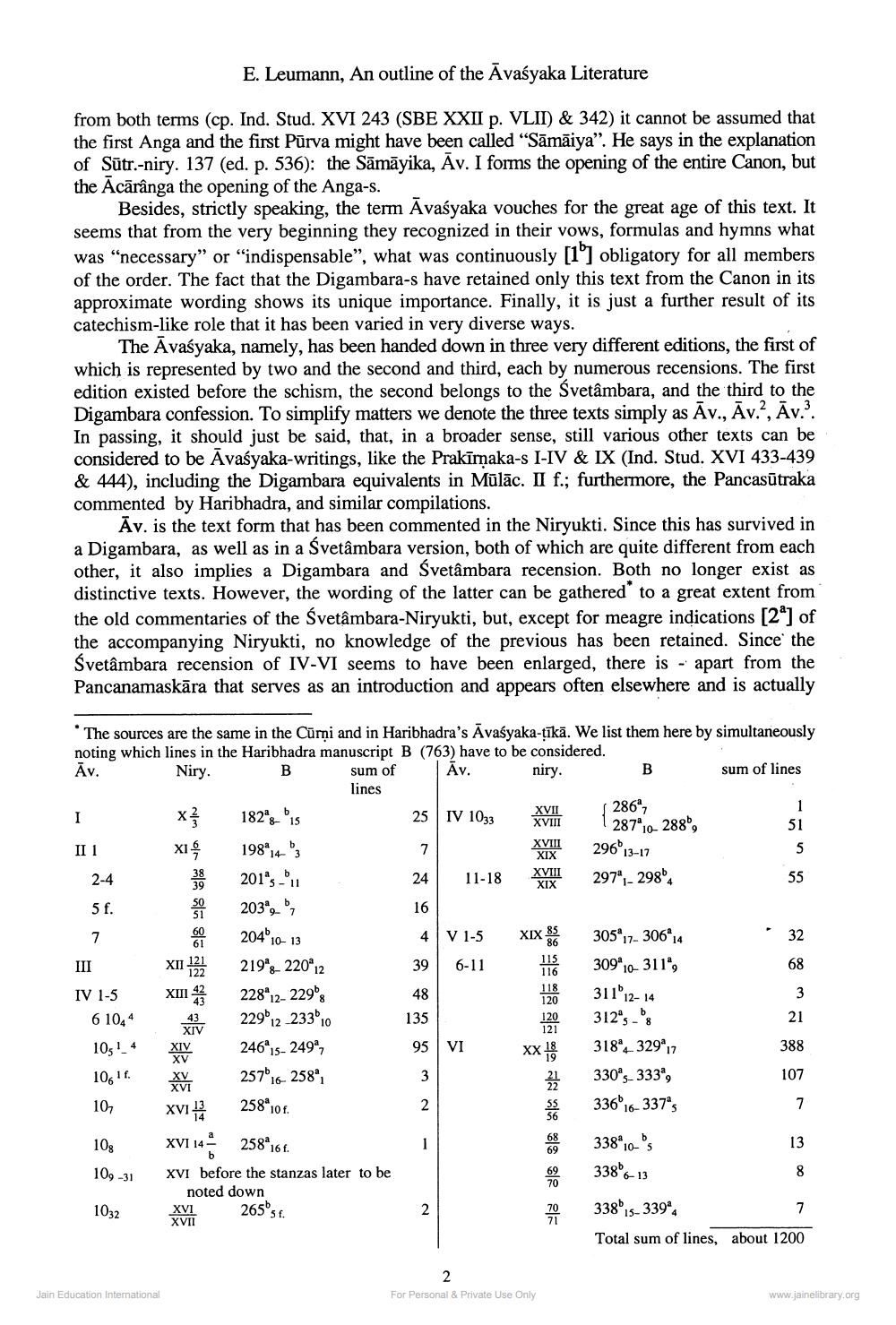________________
E. Leumann, An outline of the Āvaśyaka Literature
from both terms (cp. Ind. Stud. XVI 243 (SBE XXII p. VLII) & 342) it cannot be assumed that the first Anga and the first Pūrva might have been called "Sāmāiya”. He says in the explanation of Sūtr.-niry. 137 (ed. p. 536): the Sāmāyika, Av. I forms the opening of the entire Canon, but the Acārânga the opening of the Anga-s.
Besides, strictly speaking, the term Avaśyaka vouches for the great age of this text. It seems that from the very beginning they recognized in their vows, formulas and hymns what was "necessary" or "indispensable", what was continuously [1'] obligatory for all members of the order. The fact that the Digambara-s have retained only this text from the Canon in its approximate wording shows its unique importance. Finally, it is just a further result of its catechism-like role that it has been varied in very diverse ways.
The Avaśyaka, namely, has been handed down in three very different editions, the first of which is represented by two and the second and third, each by numerous recensions. The first edition existed before the schism, the second belongs to the Svetâmbara, and the third to the Digambara confession. To simplify matters we denote the three texts simply as Av., Av. , Av.. In passing, it should just be said, that, in a broader sense, still various other texts can be considered to be Āvasyaka-writings, like the Prakīrnaka-s I-IV & IX (Ind. Stud. XVI 433-439 & 444), including the Digambara equivalents in Mūlāc. II f.; furthermore, the Pancasūtraka commented by Haribhadra, and similar compilations.
Āv. is the text form that has been commented in the Niryukti. Since this has survived in a Digambara, as well as in a Svetâmbara version, both of which are quite different from each other, it also implies a Digambara and Svetâmbara recension. Both no longer exist as distinctive texts. However, the wording of the latter can be gathered to a great extent from the old commentaries of the Svetâmbara-Niryukti, but, except for meagre indications [2] of the accompanying Niryukti, no knowledge of the previous has been retained. Since the Svetâmbara recension of IV-VI seems to have been enlarged, there is - apart from the Pancanamaskāra that serves as an introduction and appears often elsewhere and is actually
Av.
niry.
1
/286,
IV 1033
XVII
XIX
The sources are the same in the Cūmni and in Haribhadra's Āvasyaka-tīkā. We list them here by simultaneously noting which lines in the Haribhadra manuscript B (763) have to be considered. Niry.
в sum of Av.
B sum of lines lines x 182og'is
XVIII 1 287°10_2886, II 1 xv 1984,4's
XVIII
296'13-17 2-4 39 2015 -
11-18 XVI 2979,- 298' 0 203*, , 204'io 13
V 1-5 XIX 30517-3064 219*,_ 220*12
6-11
3090311, IV 1-5 228*2-22966
311912-14 6 1044
229012_23310 105 4 246°15-249a,
VI
318*432997 257016-258"
330°, 333*, XVI 13 258910F.
336'16-337° 103 XVI 149 258°161.
338*10's 109-31 XVI before the stanzas later to be
3386-13 noted down 1032
33861-3394 Total sum of lines, about 1200
312°5 - °8
V
1061f.
XVI
2659.
Jain Education International
For Personal & Private Use Only
www.jainelibrary.org




